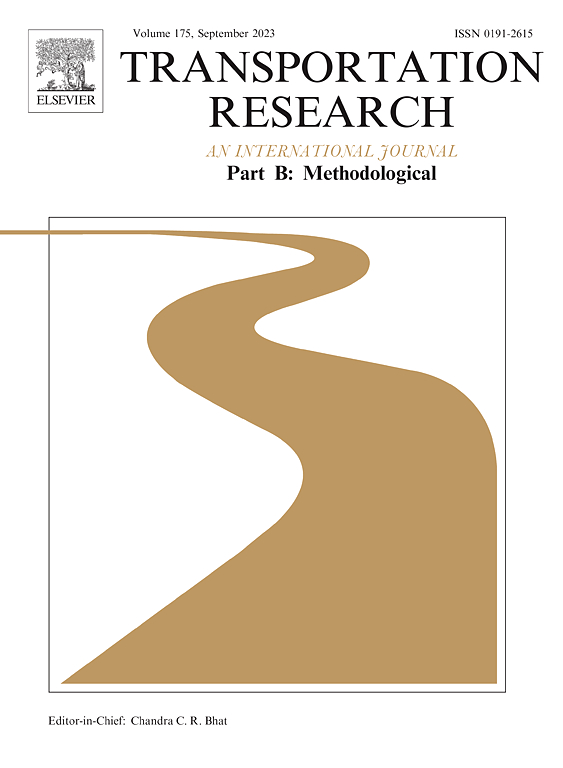随机车辆跟随模型的标定问题
IF 6.3
1区 工程技术
Q1 ECONOMICS
引用次数: 0
摘要
最近的实证和理论研究都强调了随机性在汽车跟随动力学中的关键作用。虽然已经提出了几种随机CF模型,但与确定性模型相比,它们的校准仍然相对不足。本文利用四种随机CF模型对现有的两种校准方法(最小化多次运行平均误差(MRMean)和最大似然估计(MLE))以及基于合成轨迹的新提出的最小化多次运行最小误差(MRMin)方法进行了综合评估,从而解决了这一差距。结果表明,MRMean和MLE在估计随机模型参数的基本真值时存在显著偏差,而MRMin的估计误差接近于零。具体来说,MRMean消除了随机性,将模型转化为确定性模型,而MRMin成功地分离了随机性引起的任意误差和参数引起的认知误差,这一点通过理论误差分析得到了证明。此外,在相同的驾驶环境中进行的CF实验表明,间距的差异比速度的差异更明显。根据实验轨迹进行标定,验证了综合轨迹和理论分析的结论。此外,使用自举采样估计参数的协方差矩阵,突出了MRMin捕获CF行为固有随机性的能力。这些发现加深了我们对CF随机性的理解,并为校准随机模型提供了一个强大的框架。本文章由计算机程序翻译,如有差异,请以英文原文为准。
On the calibration of stochastic car following models
Recent empirical and theoretical findings highlight the critical role of stochasticity in car-following (CF) dynamics. Although several stochastic CF models have been proposed, their calibration remains relatively underexplored compared to deterministic models. This article addresses this gap by utilizing four stochastic CF models to conduct a comprehensive evaluation of two existing calibration methods—minimizing multiple runs mean error (MRMean) and maximum likelihood estimation (MLE) as well as a newly proposed method, minimizing multiple runs minimum (MRMin) error, based on synthetic trajectories. Results show that MRMean and MLE exhibit significant biases in estimating the ground truth values of stochastic model parameters, while MRMin achieves nearly zero estimation errors. Specifically, MRMean eliminates stochasticity, transforming models into deterministic ones, whereas MRMin successfully separates aleatoric errors caused by randomness and epistemic errors caused by parameters, as demonstrated through a theoretical error analysis. Furthermore, CF experiments conducted in an identical driving environment reveal that differences in spacing are more pronounced than differences in speed. Calibration against experimental trajectories verifies the conclusions drawn from synthetic trajectories and theoretical analysis. Additionally, the covariance matrix of parameters is estimated using bootstrap sampling, highlighting MRMin’s ability to capture the inherent stochasticity of CF behavior. These findings deepen our understanding of CF stochasticity and provide a robust framework for calibrating stochastic models.
求助全文
通过发布文献求助,成功后即可免费获取论文全文。
去求助
来源期刊
CiteScore
12.40
自引率
8.80%
发文量
143
审稿时长
14.1 weeks
期刊介绍:
Transportation Research: Part B publishes papers on all methodological aspects of the subject, particularly those that require mathematical analysis. The general theme of the journal is the development and solution of problems that are adequately motivated to deal with important aspects of the design and/or analysis of transportation systems. Areas covered include: traffic flow; design and analysis of transportation networks; control and scheduling; optimization; queuing theory; logistics; supply chains; development and application of statistical, econometric and mathematical models to address transportation problems; cost models; pricing and/or investment; traveler or shipper behavior; cost-benefit methodologies.

 求助内容:
求助内容: 应助结果提醒方式:
应助结果提醒方式:


